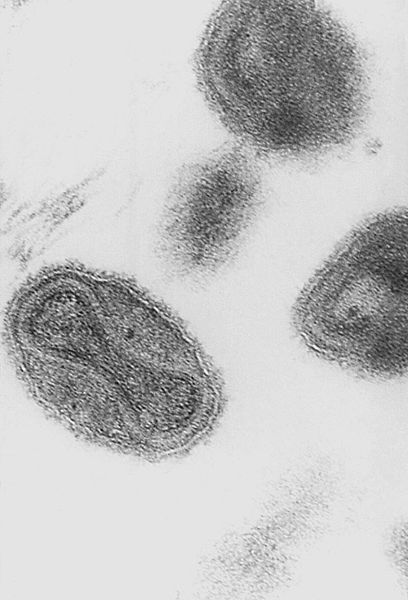-
 MHC
MHC
-
 PCB
PCB
-
 Metamorphosis
Metamorphosis
-
 MDLP
MDLP
-
 Buoyancy
Buoyancy
-
 Elongated facies
Elongated facies
-
 Gravity
Gravity
-
 Diaphysis
Diaphysis
-
 Mesosphere
Mesosphere
-
 Routing
Routing
-
 Rodenticide
Rodenticide
-
 Mole
Mole
-
 Bifurcation
Bifurcation
-
 Port
Port
-
 Arteriosclerosis
Arteriosclerosis
-
 Trachea
Trachea
-
 Phylogenesis
Phylogenesis
-
 Senescence
Senescence
-
 Clays (minerals)
Clays (minerals)
-
 Seyfert galaxy
Seyfert galaxy
-
 Glutamine
Glutamine
-
 Fibula
Fibula
-
 Lophocebus
Lophocebus
-
 Mean ecliptic for the date
Mean ecliptic for the date
-
 Gaugino
Gaugino
-
 Vocal cord
Vocal cord
-
 Optical activity
Optical activity
-
 EEG
EEG
-
 Charnockite
Charnockite
-
 Spintronics
Spintronics
Smallpox virus
The smallpox virus belongs to the Poxviridaefamily and Orthopoxvirusgenus and was the cause of smallpox.
Characteristics of the smallpox virus
The smallpox virus is ovoid in shape, 250 nanometres long and 200 nanometres wide. The viral particle has a complex organisation: its genome is a 186,000 base pair, double-stranded DNA and is bound to core proteins. These are all enveloped in an initial membrane probably originating from the cellular Golgi apparatus. A second membrane is added when the virus buds as it leaves the cell. Both membranes have anchored viral proteins. The particles containing one or two membranes are both infectious.
Smallpox virus and development of smallpox
The virus is usually transmitted by direct contact but can also be transmitted by ventilation systems.
The virus firstly invades the oropharyngeal system or respiratory mucosa and then migrates to lymphatic tissues where it begins to multiply. The virus spreads from cell to cell and then after a few days invades the circulatory system. Carried in the blood it can then infect new cell types in the body. The skin is then the most affected and develops the characteristic lesions.
 The smallpox virus forms a complex viral particle. © DR
The smallpox virus forms a complex viral particle. © DR
Latest
Fill out my online form.



